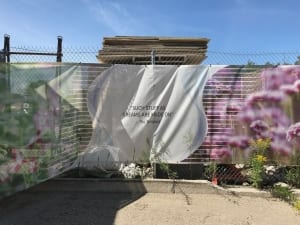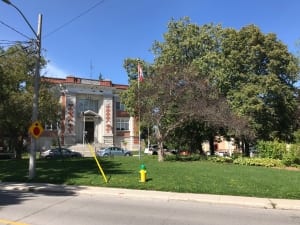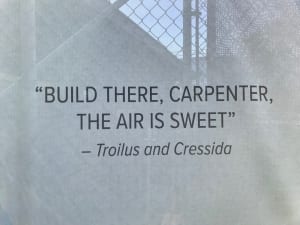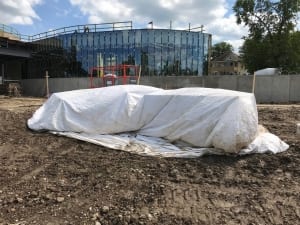An investigative report on the American back pain industry, Crooked (2017) underlines limitations of Descartes’ theory of a mind-body split
*
Updates (see also Comments section, below):
A July 23, 2021 New York Times article is entitled: “How Drug Users Developed a Key Approach to Fighting Covid.”
An excerpt (I’ve omitted embedded links) reads:
But in America, harm reduction ran smack into the drug war. From the start, needle exchange was vigorously opposed across the political spectrum. It was seen as “sending the wrong message” and condoning drug use. Today, the United States has both the world’s highest incarceration rate and its highest rate of addiction.”
An April 14, 2021 New York times article is entitled: “Overdose Deaths Have Surged During the Pandemic, C.D.C. Data Shows: The latest numbers surpass even the yearly tolls during the height of the opioid epidemic and mark a reversal of progress against addiction in recent years.”
An excerpt reads:
The preliminary data released Wednesday by the Centers for Disease Control and Prevention show a 29 percent rise in overdose deaths from October 2019 through September 2020 — the most recent data available — compared with the previous 12-month period. Illicitly manufactured fentanyl and other synthetic opioids were the primary drivers, although many fatal overdoses have also involved stimulant drugs, particularly methamphetamine.
And unlike in the early years of the opioid epidemic, when deaths were largely among white Americans in rural and suburban areas, the current crisis is affecting Black Americans disproportionately.
An April 8, 2021 New York Times article is entitled: “For Him, the Delight Is in the Digging: Patrick Radden Keefe has investigated human smuggling, government espionage and the Northern Ireland conflict. With “Empire of Pain,” he takes on the Sackler family and the opioid crisis.”
An excerpt reads:
During his research, he noticed the uptick in heroin usage in the United States. As he learned more about soaring opioid abuse, he stumbled on the Sackler name. He had heard of the family because the name is displayed at the Metropolitan Museum of Art, but he didn’t know much about them.
An April 9, 2021 New York Times article is entitled: “In ‘Empire of Pain,’ the American Dynasty Behind OxyContin.”
An excerpt reads:
Taking cover under complexity has been a common strategy for tobacco companies and big oil — entities that have profited from disaster while seeking ways to avoid any moral opprobrium and expensive accountability. But even the most elaborately complex phenomena can still have relatively simple beginnings, a kernel that requires only the ingenuity and ruthlessness of people who are ready to exploit it.
Since 1996, 450,000 Americans have died from opioid overdoses, making them the leading cause of accidental death in the country. In “Empire of Pain,” Patrick Radden Keefe tells the story of how the Sackler family became a decisive force in a national tragedy. “Prior to the introduction of OxyContin, America did not have an opioid crisis,” Keefe writes. “After the introduction of OxyContin, it did.”
A March 16, 2021 New York Times article is entitled: “Purdue Pharma Offers Plan to End Sackler Control and Mounting Lawsuits: The OxyContin maker filed its long-awaited restructuring plan in bankruptcy court. Revenue from the new company would go exclusively to abating the opioid crisis.”
An excerpt reads:
The new filing, made minutes before a court-imposed deadline, is a milestone in Purdue’s long, troubled history as a maker and marketer of OxyContin, the prescription painkiller that turned out to be addictive for hundreds of thousands of people. For years, federal and state authorities tried to curb Purdue’s marketing tactics. In 2007, the Justice Department settled with Purdue and top executives for $634.5 million to resolve criminal charges related to its marketing practices.
A May 2020 Atlantic article is entitled: “America’s Other Epidemic: A new approach to fighting the opioid crisis as it quietly rages on.”
An excerpt reads:
A decade later, Nikki, now 28, has become one of the leading voices on the opioid crisis in rural America – where, some 20 years into the disaster, treatment options remain scarce even as overdose deaths continue to climb. In many rural places, neighbors turn on one another rather than placing the blame higher up – on the pharmaceutical companies that created the epidemic and the impotent regulators and bought-off politicians who enabled it. (In my reporting on the crisis, I’ve seen this attitude over and over. At a recent meeting in rural North Carolina, for instance, the head of the local Kiwanis Club objected to a plan to give people rides to treatment facilities, saying: “I think when they relapse, we should let them die and take their organs.”)
A March 18, 2021 New York Times article is entitled: “Can Magic Mushrooms Heal Us?: A very promising mental health experiment is taking shape in Oregon.”
An excerpt reads:
But the more pressing case for psilocybin comes from research out of Johns Hopkins, U.C.L.A., N.Y.U. and elsewhere that has shown it to be a potentially effective treatment for major depression, end-of-life anxiety and drug addiction. “One of the things I’ve come to is that addiction medicine in 2021 is in desperate need of transformative technologies,” Todd Korthuis, a professor of medicine who specializes in addiction at Oregon Health and Science University and a member of Oregon’s Psilocybin Advisory Board, told me. The studies so far are preliminary, but they are “showing dramatic change in people’s lives — that’s what we need for cocaine use disorder, methamphetamine use disorder, even alcohol and tobacco.”
[End of updates]
*
A study by the investigative journalist Cathryn Jakobson Ramin, entitled: Crooked: Outwitting the Back Pain Industry and Getting on the Road to Recovery (2017), focuses on the author’s own encounters with the American back pain industry:
After exploring, in Part One, dead ends and disasters including wholesale back surgeries of years ago (highly profitable for surgeons) that in many cases did not provide long-term relief for patients and noting death, destruction, and ruination occasioned by opioids, formerly heavily – and skilfully – marketed by Big Pharma, in Part Two, the author outlines how she finally finds her own solutions to back pain.
Systems of transportation infrastructure
I came across Crooked (2017) on a visit to the Stratford Public Library.
I often walk to our local library. As I walk, I view a construction site in the park system alongside the Avon River at the heart of Stratford. I’ve been following progress on the site since October 2018. The photos at the current post highlight ongoing work at the Tom Patterson Theatre site.

Tom Patterson Theatre site, Stratford, Ontario, view looking north from Water Street. Jaan Pill photo
Click here for previous posts about Tom Patterson >
Where I walk in Stratford, the streets are generally safe (there are exceptions) for pedestrians.
Based on ongoing news reports (and my own anecdotal experience), walking around in Toronto, by way of contrast – and in particular crossing the street – can at times be more predictably fatal, or near-fatal, especially for older residents.
Historically, this follows from the primacy that North American culture has granted the car, in contrast, say, to the Netherlands.
In August 2018, we were in Amsterdam. I was impressed with the bicycle culture in place, in that city.
I would never have imagined that such a system of bicycle transportation could have been set into place – constructed as a social, political, and built-form reality, through the concerted actions of multitudes of residents – anywhere in the world.
A strong, built-form (evident in differential structuring of pathway surfaces and elevations, by way of example) bicycle infrastructure, of a scale and calibre that is amazing for a first-time visitor to observe, is evident throughout Amsterdam – and, from what I’ve read, across the Netherlands.
The integrated, highly effective and beautifully designed traffic system (featuring separate, consistently legible pathways for bikes, pedestrians, and cars) is actually woven, from what I observed, into the neural pathways of Amsterdam residents. The brains of residents have been rewired, for the better.
What I saw in Amsterdam underlined that citizens have a choice, regarding transportation systems. What is required is the political will.
Community (2011)
The Stratford Public Library is smaller than the Toronto Public Library. Both library systems are impressive. The library in Stratford has fewer books than some libraries in Toronto but the ones on the shelves are well chosen.
Among books I’ve come across at the Stratford Public Library are Community: A Contemporary Analysis of Policies, Programs, and Priorities (2011) and Crooked (2017).
Community (2011) features a balanced discussion, from the perspective of sociology and anthropology, of the intersection between neoliberalism and the community.
The book features a context-sensitive discussion about how community is defined. Sometimes, such definitions accord with evidence; at other times, they ignore the evidence on the ground.
There are many ways to define community. By way of example, the funding configuration for a given community-based project will influence how a community is defined; in some cases, such a term – that is, “community-based’ – may actually ignore the people living at a given geographical location. That is to say, the rhetoric associated with what a community-based project entails does not, at times, come anywhere close to matching the reality.
Crooked (2017) and Seeing Like a State (1998)
I was also interested to come across Crooked at a library shelf at the Stratford Public Library.
A lens or window that I’ve been using, in visiting passages and pages at Crooked, is that of legibility. Legibility is concerned with optics – with blurbs, brands, branding, public relations, advertising, metaphors related to reading comprehension, and with quick takes. It deals with processes of abstracting, condensing, and outlining.
That is to say, I’ve been using the legibility lens that I’ve come to enjoy using, after reading Seeing Like a State (1998).
The legibility lens concerns itself with the fact that, in order to extract certain kinds of essential information, that may be available at the local level, a person (such as an official or leader) acting at a state level has to engage in a process of simplification.
That is, as James C. Scott explains in Seeing Like a State, the state needs to look at, and measure, certain things – and is in a position (generally until disaster of one kind or another eventually emerges, because, in the end, reality resists simplification) to ignore the rest of the reality that exists, at the local level distant from the centres of power.
Forestry
A paradigm for such a simplification is available, as Scott outlines, from the history of forestry, beginning in the nineteenth century in Prussia and thereabouts. In what came to be known as “scientific forestry,” the state simplified things by looking solely at how to rationalize the process of gaining economic benefit from harvesting and selling timber.
That is to say, state officials asked, “How do you look at a forest, in order to turn it into a natural resource that can be exploited, in a manner that maximizes profit, in a sustainable way?”
It occurred to state officials that the best way to achieve legibility, with regard to trees, was to do away with messy old-growth forests, and choose instead one kind of tree, that grows quickly.
After choosing the species of tree, you plant the trees all in straight rows, like rows of soldiers on parade.
Such a system works well – at first. But as the decades pass, and the years come and go, the monocrop of regimented trees, which initially grew at a fast rate, starts to yield less and less timber.
Something goes terribly wrong – because simplification – the process of achieving legibility by reading a forest only in accord with a narrow range of criteria – ignores key aspects of what makes for a thriving, productive forest ecosystem.

The Stratford Public Library is a short walk from the site of the Tom Patterson Theatre. View looking east from Waterloo Street North. Jaan Pill photo
The concept of legibility, as Scott uses it, applies to state-level actors, including state-level political leaders seeking to implement policies that underly neoliberalism, which like any strongly held belief system, at times entails extreme simplification in service of legibility.
For my own purposes, however, I like to think of legibility in more general terms.
As a heuristic or analytical device, in the usage I have in mind, legibility can refer, among other things, to how we read particular circumstances or situations in everyday life.
Aftermath of misleading marketing of opioids
With opioids, the story as described in Crooked 2017 has unfolded as it has because initially, a restricted kind of market-oriented legibility was applied to them.
The history of marketing of American pharmacological medicine involves a particular kind of legibility. The initial marketing of opioids was successful because it prompted physicians and patients to view such drugs as an eminently safe method to address chronic pain. In that context, we are speaking about legibility as experienced by the medical profession and the public. That is one kind of legibility.
How did pharmaceutical marketers establish a suitable legibility profile for opiates? They determined that a brief letter written by a physician to a medical journal, claiming that opioids were an effective way to address chronic pain, and were also totally safe for long-term use, was going to be a strong hook – a first-rate basis – for a marketing campaign on behalf of opioids.
That reading of the situation, on the part of marketers, turned out correct. When physicians and patients thought of opiates, the safety of opiates was foremost in their minds.
By the time it was determined that the brief letter to a medical journal was not backed up by evidence, untold numbers of lives had been lost and deaths directly related to opiates continue to occur.
This story underlines one way in which legibility can work, with immense profits for some and death, destruction, and ruination for others.
That said, the question of opiate use for pain management does call for nuanced and well-informed discussion, as noted at an Aug. 28, 2019 CBC The Current article entitled: “Doctors share responsibility in the ‘perfect storm’ of Canada’s opioid crisis, expert says: Patients in chronic pain left physicians in a difficult position, says Dr. Anita Srivastava.”
News reports related to marketing of opioids demonstrate consistency. A Sept. 5, 2019 Associated Press article, entitled “Australia faces opioid crisis as companies push drugs abroad,” notes:
In dozens of interviews, doctors, researchers and Australians whose lives have been upended by opioids described a plight that now stretches from coast to coast. Australia’s death rate from opioids has more than doubled in just over a decade. And health experts worry that without urgent action, Australia is on track for an even steeper spike in deaths like those seen in America, where the epidemic has left 400,000 dead.
A Sept. 6, 2019 Associated Press article is entitled: “Opioids Down Under: Australian mom fights to save son’s life.”
A Sept. 5, 2019 Thomson Reuters article at the CBC website is entitled: “OxyContin maker preps to ‘free-fall’ into bankruptcy as settlement talks stall: Move would reduce legal liability to about $1B US as opposed to up to $12B currently.”
A Sept. 7, 2019 Global News article is entitled: “Why a landmark opioid damage award is good news to climate change advocates.” The article notes that litigation related to the the opioid crisis can serve as a starting point for strategizing with reference to climate change.
A Sept. 11, 2919 CBC article is entitled; “‘His life is a constant battle for survival: Meet ‘Rabbit,’ a fentanyl user in Toronto.”
A Sept. 13, 2019 Associated Press article is entitled: “NY finds $1B in hidden transfers by family behind OxyContin.”
A Sept. 21, 2019 CBC article is entitled: “What Purdue Pharma’s bankruptcy filing means for Canada: Purdue Pharma Canada claims it is a ‘separate company’ from Purdue Pharma in U.S.”
An excerpt reads:
The Canadian lawsuit rests on the same principles alleging misleading advertising and understating the addictive qualities of opioids, but there are differences in the legal systems that make prosecuting the companies challenging — including the speed in which the courts move.
“It has taken them I think 20 years, but the tobacco companies in Canada are now bankrupt and facing the recovery actions brought by the provinces. It has just taken a long time to get there,” Mogerman said.
“Eventually, the result will be the same. If they did something bad they’re going to have to pay in Canada, just like they will in the U.S.”
Purdue Pharma Canada said in a statement that it followed all of Health Canada’s regulations, including those governing marketing, and it’s “deeply concerned” about the opioid crisis in B.C. and across Canada.
But Persaud says there is “documented evidence” that Purdue Pharma Canada alleged in medical journals that long-acting opioids such as OxyContin had a lower abuse potential than earlier opioids.
A June 20, 2019 New England Journal of Medicine review article is entitled: “Nonnarcotic Methods of Pain Management.”
An excerpt reads:
A common way to assess pain is to ask the patient about the intensity of pain on an 11-point numerical scale (0 to 10), but an overemphasis on the effect of treatment on pain intensity and overdependence on the assessment of pain with the use of these scales can lead to unnecessary opioid use.9
Drug Wars
Previous posts address the related topic of Drug Wars:
Click here to access previous posts about Drug Wars >
With regard to the Drug Wars topic, a Sept. 18, 2019 Guardian article is entitled: “US attack on WHO ‘hindering morphine drive in poor countries’: Claims have hurt efforts to help people around world in acute pain, say palliative care experts.”
A Sept. 20, 2019 CBC article is entitled: “Vancouver police call for safe drug supply: Organized crime inspector says addiction is a health-care issue, not a criminal one.”
Benign and helpful forms of legibility
Legibility can also take on benign and helpful forms. By way of example, Crooked clearly and evocatively describes movement therapies such as the Alexander Technique and the Feldenkrais Method.
The author describes the origins of these techniques, the beneficial outcomes of their application, and the theoretical and evidence-based rationale on which they are based. Here legibility is concerned with a person’s capacity to tune in to how she or he is using her or his body – in sitting, standing, and moving around.
The author also speaks highly of the work of Stuart McGill at the University of Waterloo. After reading one of McGill’s books some time back, I’ve stopped doing a back extension exercise, using equipment at a gym, that he cautioned against.
McGill also recommends that, instead of trying to sit straight for a long time while working with a laptop at a desk, as “ergonomic experts” often advise, it’s much better to keep on changing your position – such as by changing the height of your adjustable-height chair. Sitting up straight, as recommended in ergonomic posters seen everywhere, is (in practice, in reality, in McGill’s view) good for about one or two minutes of sitting.
I was also interested in Ramin’s description of the work of James Rainville, chief of physical medicine and rehabilitation at New England Baptist Hospital in Boston. Rainville has focused on providing back patients with “exercises that were performed, under supervision, at a prescribed dose, without dwelling on associated discomfort” (p. 244). I was interested to learn that Rainville “didn’t buy McGill’s premise that ‘perturbed,’ or dysfunctional motor patterns had to be remedied before building strength and endurance” (p. 245).
I’ve learned many things of value by coming across Ramin’s book and studies by James C. Scott, Stuart McGill, and many others.
René Descartes and theory of mind-body split
Finally, a word about the French philosopher René Descartes. In the second part of Crooked, the author documents the close connection between mind and body in terms that I find convincing. The mind and body are an integrated whole, according to widely documented evidence; there is no split between them.
Ramin notes that Descartes “had proposed a theory that neatly separated the mind from the body, in an effort to dispel the idea that pain and sickness were evidence of diabolical possession” (p. 180).
Especially given my interest in a study by Aldous Huxley regarding demonic possession, I found this reference apt.
I am reminded, as well, of a 1994 study that addressed what Descartes got wrong, in advancing a theory of a mind-body split:
Body and mind, inextricably intertwined
On the same theme, an excerpt from a Sept. 29, 2019 Atlantic Monthly article, entitled “What a New Theory of Attention Says About Consciousness: Filtering out distractions might be more important for the brain than highlighting important information,” reads:
But now some researchers are trying a different approach, studying how the brain suppresses information rather than how it augments it. Perhaps more important, they’ve found that this process involves more ancient regions much deeper in the brain – regions not often considered when it comes to attention.
By doing so, scientists have also inadvertently started to take baby steps toward a better understanding of how body and mind – through automatic sensory experiences, physical movements, and higher-level consciousness – are deeply and inextricably intertwined.
An additional excerpt from the article, which first appeared in Quanta, reads:
Slagter is now studying the role that the basal ganglia might play in consciousness. “We experience the world not just using our bodies, but because of our bodies. And brains represent the world in order to meaningfully act in it,” she says. “Therefore, I would think that conscious experience must be tightly linked to actions,” just like attention. “Consciousness should be action-oriented.”
Blurb for Crooked (2017)
A blurb for Ramin’s study (I’ve broken the text into two paragraphs) reads::
In her effort to manage her chronic back pain, investigative reporter Cathryn Jakobson Ramin spent years and a small fortune on a panoply of treatments. But her discomfort only intensified, leaving her feeling frustrated and perplexed. In the process of searching for better solutions, she exposed a much bigger problem. Costing roughly $100 billion a year, spine medicine – often ineffective and sometimes harmful – exemplified the worst aspects of the U.S. health care system. The result of six years of intensive reporting, Crooked offers a startling look at back pain medicine, and provides practical advice and solutions.
Jakobson Ramin interviewed scores of spine surgeons, pain management doctors, physical medicine and rehabilitation physicians, exercise physiologists, physical therapists, chiropractors, and specialized bodywork practitioners. She met with many patients whose pain and desperation led them to make life-altering decisions, and with others who triumphed over their limitations. Stunningly brilliant and utterly comprehensive, Crooked is not only important but also essential to millions of back pain sufferers and all types of health care professionals. Jakobson Ramin shatters assumptions about surgery, chiropractic methods, physical therapy, spinal injections, and painkillers, and addresses evidence-based rehabilitation options – showing, in detail, how to avoid therapeutic dead ends, while saving money, time, and considerable anguish.
Monoculture plantations ‘do little to tackle climate change or preserve biodiversity’
An April 16, 2019 Yale Environment 360 article is entitled: “Why Green Pledges Will Not Create the Natural Forests We Need.”
The subhead reads: “Nations around the globe have pledged to increase their forest cover by planting millions of trees. But new research shows much of this growth would be in monoculture plantations that would be quickly cut down and do little to tackle climate change or preserve biodiversity.”
An excerpt reads:
Forestry and climate experts say that monoculture timber plantations have their place, but that they must be in addition to the 1.35 million square miles of restored natural forests, not instead of them. These experts also say that an important component of reforestation is supporting policies that help trashed forests and degraded lands regenerate naturally into jungle or woodlands, thus promoting significant carbon storage and fostering biodiversity. Richard Houghton, an ecologist at the Woods Hole Research Center in Massachusetts, has estimated that if degraded tropical forests were allowed to regrow, they could capture up to 3 billion tons of carbon annually for as much as 60 years, potentially “providing a bridge to a fossil fuel-free world.”
Leave a Reply
Want to join the discussion?Feel free to contribute!












A Nov. 9, 2021 New York Times article is entitled: “I Have to Believe This Book Cured My Pain: A science writer investigates the 30-year-old claims of an iconoclastic doctor who said chronic pain was mostly mental.”
An excerpt reads:
In the end, Dr. Sarno was right about exercise aiding, not hampering, recovery and about the link between emotional and physical pain. But not all chronic pain is psychological. Dr. Sarno’s Freudian treatment is far from the only one that works. And few scientists would say that our brain uses pain to distract us from negative emotions (and definitely not by cutting off blood flow to muscles).
I still think of Dr. Sarno as a savior, and I continue to recommend his books to friends and family; some have read them — and had success — while others have politely declined. Yes, Dr. Sarno almost certainly oversimplified and overemphasized the psychological origins of pain. But he also helped me see that both the mind and the body are responsible for our physical suffering. And that we’re not powerless to change it.
More on Descartes: An Oct. 14, 2021 San Francisco Chronicle article is entitled: “Physicist Fritjof Capra charts 50 years of science and philosophy in ‘Patterns of Connection’”.
I don’t know what the author knows about mysticism, but I find his comments about Descartes of interest; an excerpt from the article reads:
Q: You’ve long advocated for the abandonment of linear thought and mechanistic views of Descartes. Can you point to efforts that are succeeding in this shift?
A: Linear, mechanistic science has been very successful from the time of the scientific revolution in the 17th century (Bacon, Newton). This has provided a successful basis for scientific inquiry. But at the same time, the world got more populated and more interconnected. As this happened, it became more evident that we are all living in networks within networks. We discovered 100 years ago the network structure of ecosystems, and subsequently the importance of networks in all living systems.
Today, everybody knows that social networks are very important. … A network is a certain pattern of links and relationships, and it is nonlinear. In order to understand networks we need to learn to think in patterns and relationships. But this nonlinear way of thinking and acting is something that we are not used to, as most of us have been educated in this nonlinear way. It’s difficult to overcome.